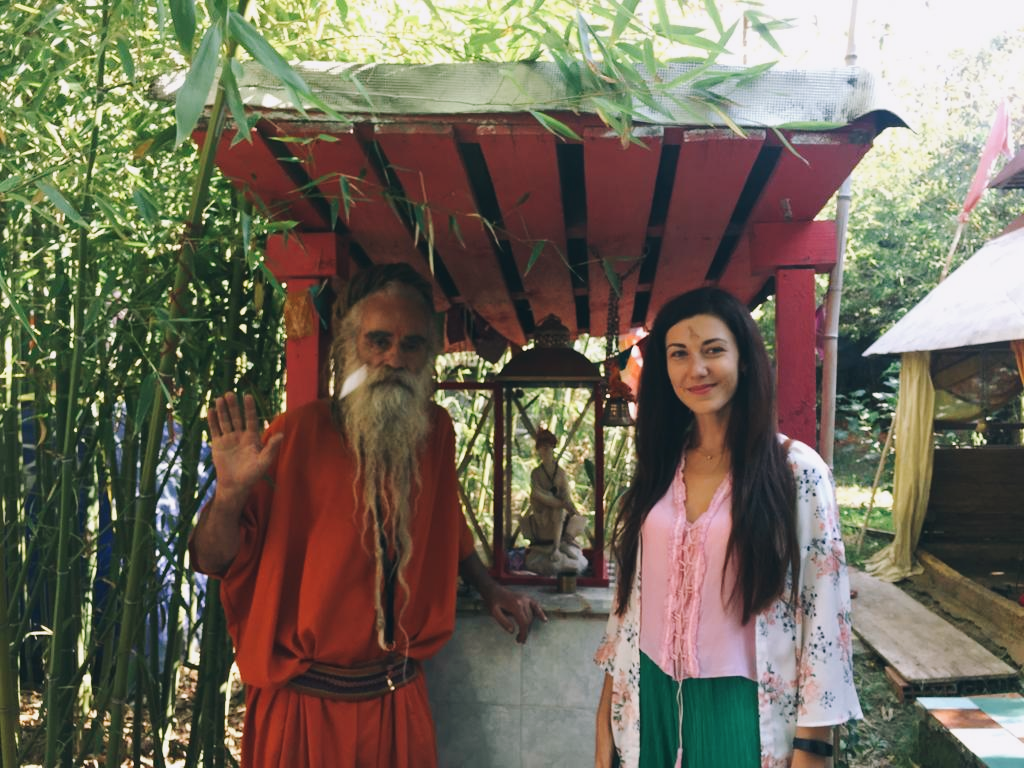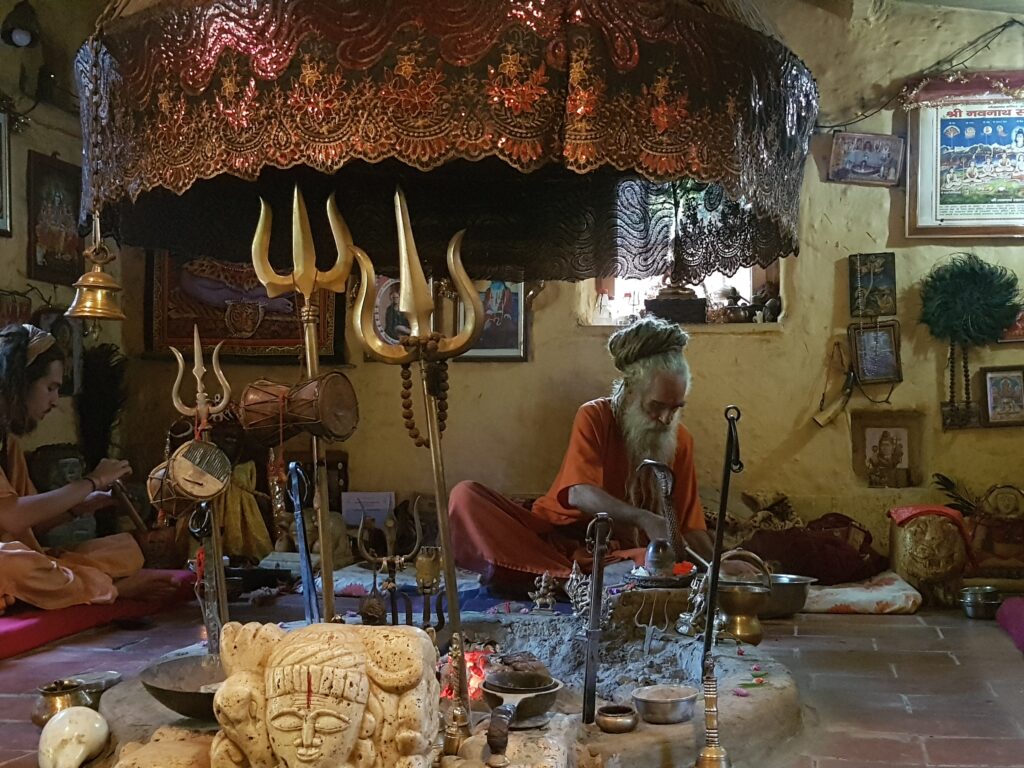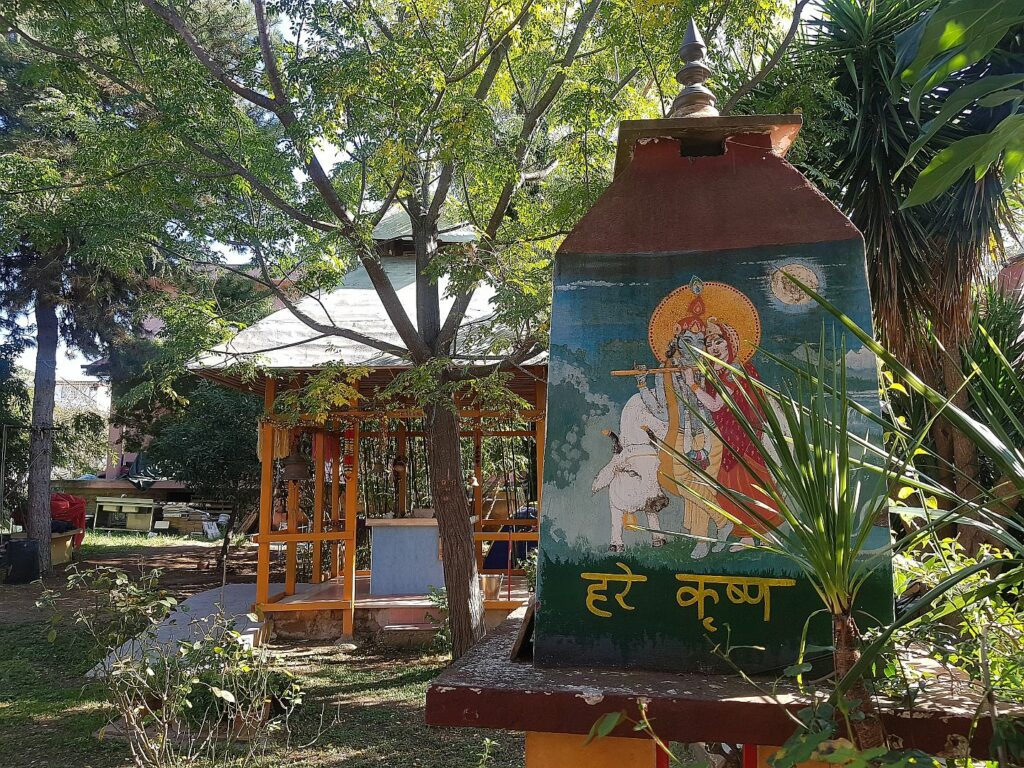Russell Berrie fellows Nataliia Pavlyk and McKenzie Fergus recently visited the Kali Mandir Hindu temple in Rome as a part of their interreligious activities. Here is Nataliia’s reflection about the experience:
After an hour’s drive in heavy traffic, we arrived to the beautiful Roman countryside. We entered the backyard and – in a moment we were immersed in a small Indian paradise with palms, banana trees, tropical flowers, huge statues of Hindu gods, flavored incenses, and singing birds.
A man greeted us dressed in orange clothing; although he had a long grey beard and deep wise eyes, he was not old. His hair was in traditional jaṭā style dreadlocks. He was Krishnanath, Adesh Guruji of the temple, yogi of Nath tradition. He warmly welcomed us, showed the temple with its inner garden, invited to share festive lunch with the community and told his story. Italian by birth, Alessandro Pace decided to travel to India by land route to meet sage gurus and find answers to his everlasting questions after he had finished high school. Consequently, he spent a few years in the Himalayas absorbing ancient wisdom of sanātana dharma and slowly over time was initiated to become a guru himself. Something that really raises Krishnanath over any traditional interreligious experience is his natural ability to penetrate the hearts of people and fill them with peace, tolerance, and spiritual joy.
Today he is very famous in Italy, has got many followers, and is known as “Socrates of our days.” The center organized by Krishnanath in Rome is mainly dedicated to the worship of Shiva and Kali and is open to devotees of Hindu religion, as well as to representatives of other religious traditions. Guruji is open to interreligious dialogue and tries to contribute to the interfaith tolerance in the world. Along with organizing courses, conferences, lectures and exhibitions on art, yoga, dance, crafts, musical and theatrical performance, the community also carries out activities to spread Indian culture and organize trips to sacred places of the Hindu religion. It aims to unite both Indians and foreigners promoting world peace.

On that day we participated in the celebration of Diwali, one of the most famous Hindu festivals of lights that symbolizes the spiritual victory of the light over darkness and ignorance. Many local people came with their families to greet each other and spend time together. Additionally, everyone was invited to participate in the havan, a ritual offering in the fire, accompanied by mantra recitation, which is a figurative representation of the Hindu cosmology and is a link between the worlds of gods and living beings. The offerings include symbolic objects, such as grains, seeds, milk, coconuts, etc. It is believed that fire has a purifying effect on both the devotee who makes the offerings and the environment. Numinous immersion in the Indian dharma was a great spiritual journey!


